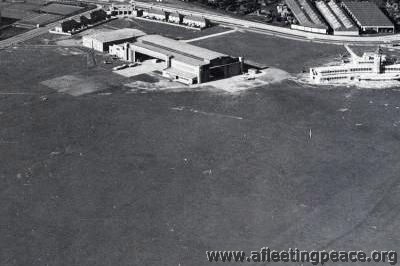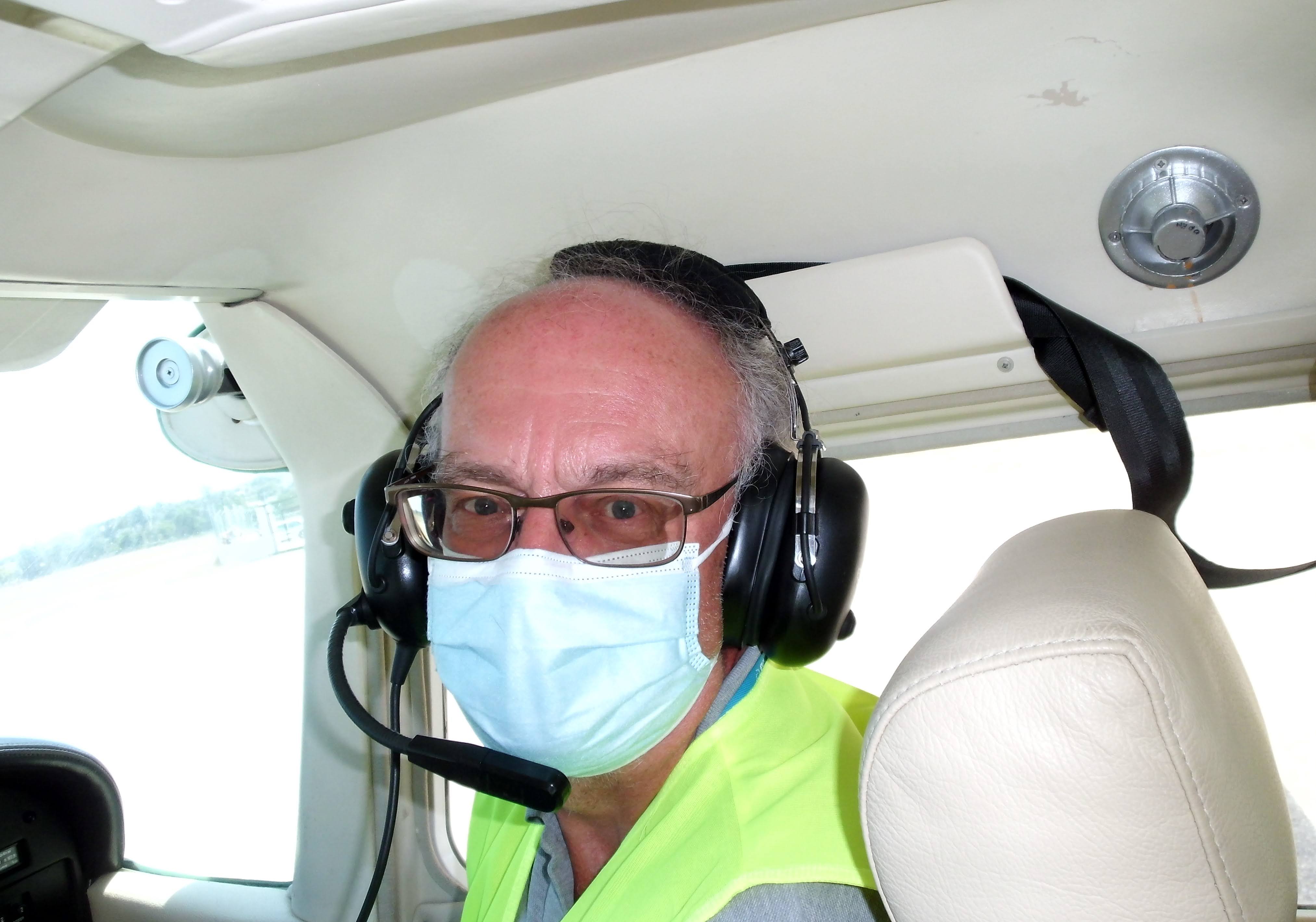Aviator
-
Bowman, Geoffrey Hilton
Sqn-Ldr Geoffrey Hilton Bowman 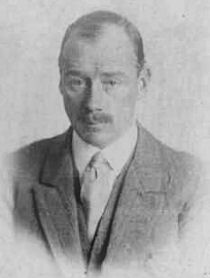 in 1916
in 1916b. 2 May 1891 in Stretford, Lancs.
b. 2 May 1891, Stretford, Lancs
RFC/RAF 1916-37 & 1939-41
d. 25 Mar 1970
Research: thanks to Steve Brew
-
Bradbrooke, Francis Delaforce
Francis Delaforce 'Brad' Bradbrooke
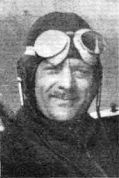 1935 (Flight)
1935 (Flight)on the staff of 'The Aeroplane'
-
Bradbury, J
Flt-Lt J Bradbury 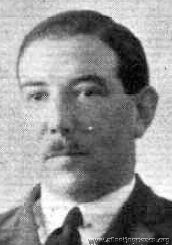 1931
1931 Transferred from the Army to the R.F.C. in 1917; 1919-20 R.A.F. in Egypt, and from 1921-25 in India, seeing active service in Waziristan in 1923 and 1925.
A test pilot at Martleslham from 1926.
-
Bramson, Mogens Louis
Mr Mogens Louis Bramson 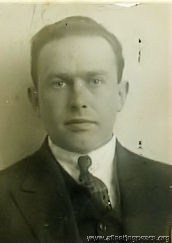
photo: 1923, aged 28
from Copenhagen. Flew with Major Savage's 'Sky Writers' at Hendon in the 1920s - borrowed an aeroplane to write a certain lady's name in the sky. She, of course, later became his wife.
And, would you believe it, he was in charge of the 'Scandinavian Sky-Writing Expedition' in 1923-24.
-
Broad, Hubert Stanford
Capt Hubert Stanford Broad MBE AFC
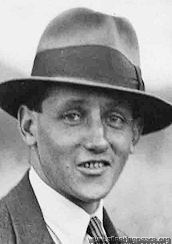 photo: 1930, aged 33
photo: 1930, aged 33b. 18 (or 20) May 1897
shot through the neck in WWI by one of Richtofen's Red Circus pilots; [c.f. Angus Irwin]; second in Schneider 1925, to Jimmy Doolittle.
In 1928, he spent possibly the most boring 24 hours of his life by beating 'all existing figures' for long endurance flights in light aeroplanes (unfortunately there was no official 'record' to beat as such, the FAI not recognising such things). His log makes, um, rivetting reading:
--0--0--0--0--0--0--0--0--0--0--
5:30pm: Hendon
7:40pm: Gloucester
8:30pm: Coffee and sandwiches
11pm: Over Central London, 3,000ft; watched theatre crowds leaving
Midnight to dawn: Remained over Edgeware
2:30am: second meal
4:10am: First signs of dawn
5:10am: Biggin Hill. Saw night bomber in air
...
Noon: Stamford. Very sleepy
4:30pm: Ipswich
--0--0--0--0--0--0--0--0--0--0--
Having trimmed the controls, Hubert settled down and read 3 complete novels 'to relieve the boredom'.
When he finally landed, he he said that he was very stiff with cramp, and promptly went home to sleep. His Moth still had 12 gallons of fuel, so it could have kept going for another 4 1/2 hours...
He was named as co-respondent in Beryl Markham's divorce in 1939.
de Havillands test pilot until 1935 (Bob Waight succeeded him) - broke the world's speed and height records for light aircraft in the original monoplane Tiger Moth, then joined RAE Farnborough; Hawker test pilot post-WWII; died 1975
FLIGHT MARCH 28TH, 1946
No. 2. CAPT. H. S. BROAD, Senior Production Test Pilot, Hawker Aircraft Co.
FOR sheer wealth of flying experience it is doubtful whether there is another pilot in the world to equal Hubert Broad. He has flown everything from diminutive single-seaters to multi-engined--bombers, and including a number of out-and-out racing aircraft. His logbooks, of which he has filled some nine or ten, total over7,500 hours' flying time and 182 separate types. These are honest types—not modifications or different mark numbers of the same aircraft. Many of these he has also flown as seaplanes. Broad, at the age of nineteen, learnt to fly at the Hall School of Flying at Hendon in 1915. The aircraft on which he made his first flight (there was no dual, a pupil did straights across the airfield until he felt it was safe to do a circuit)was the single-seater Caudron with35 h.p. Y-type Anzani engine. Believe it or not, with this tiny horsepower the Caudron occasionally was made to stagger into the air with two people on board, but the passenger had to sit on the wing by the side of the nacelle.
Early Days
The end of 1915 found Broad in the R.N.A.S. at Eastchurch, and he was on the very first course at Cranwell, which was then a R.N.A.S. establishment rejoicing in the name of H.M.S. Daedalus. His first tour of duty at the front was with No. 3 Squadron at Dunkirk. He was among a number of pilots lent by the R.N.A.S. to the R.F.C. No. 3 Squadron flew Sopwith Pups, and it was while he was on one of these, escorting a bombing raid by 90 h.p. R.A.F.-engined B.E.s, that he was shot through the neck by one of Richtofen's later Goering's—Red Circus pilots.
On recovery he spent a while as an instructor at Chingford and then went for his second tour of operations with No. 46 Squadron, who flew Sopwith Camels. The end of the 1914-18 war found Broad instructing at the Fighter Pilots' Flying School at Fairlop.
Peace found him, as it found so many other young fellows ,with the ability to fly aircraft superbly and no other means of making a living. But a good living could be made by joy-riding in the early 1920's. First he joined the Avro Company, who were running joy-riding in a fairly big way, and in 1920 went to the Adiron Lakes in America with two Avro 504 seaplanes. These two aircraft saw their last days in Long Island, where they were completely wrecked by an autumn gale.
By the next year he was back in England competing in the Aerial Derby air race round London on a Sopwith Camel. He finished 6th.In October, 1921, Broad joined de Havillands. Those who know this great concern now will smile to learn that when it started in those days it consisted entirely of two fabric hangars and a hut at Stag Lane. If memory serves, the capital of the company at that time was £100.
The D.H. series numbers, which started in the Aircraft Manufacturing Co. Ltd., were carried on in this new firm, and Broad flew every one of the D.H. designs from the D.H.27 to the D.H.90. In the same period he did a lot of test flyingfor other aircraft constructors.
He did the W.10, Handcross, Hendon, and some others for Handley Pages, the Parnall Pipit and the Saunders A. 10 fighter. On the Gloster Grebe he ran into wing flutter for the first time (this trouble, in those days, was on a par with the compressibility troubles we have now).
Seaplane testing
Another big job he did was most of the development work on the Gloster II and III racing seaplanes. Over a period I used to go with him to Felixstowe regularly. As a Press man I was forbidden the precincts of the R.A.F. seaplane station, but there was a perfectly good Great Eastern Railway pier alongside the station. I used to climb over the fence and watch the proceedings from the pier head. Broad nearly lost his life there one day in October,1924. As he was landing the Gloster II a forward strut to the floats collapsed, and the aircraft turned completely over. Mrs. Broad was watching from the shore, and it seemed a very long time before Hubert appeared on the surface.
In 1925 Hubert Broad flew the Gloster III racing seaplane in the Schneider Trophy contest which was held that year over Chesapeake Bay in America. This was the race in which Henri Biard, flying the SupermarineS.4—the true forerunner of the Spitfire—crashed in the water with wing flutter. Broad finished this race second to Jimmy (now General) Doolittle. That must have been a vintage generation, because many names from that period have found their way into the high-spots of this last war.
With the advent of the D.H. Moth in all its variants, Broad was to be seen performing aerobatics at most flying club meetings and entering many of the races. These included the King's Cup Race, which he won in 1926. He was flying a delightful Cirrus I Moth, which was a study in ivory and red. His average speed over the whole732 miles was 90.4 m.p.h. His piece de resistance in aerobatics was a perfectly formed big loop, the base of which was only some 150ft from the ground. It was a joy to behold, but very dangerous to perform. Broad had sufficient sense to realise this and sufficient courage to stop doing it.
"Hooked"
It was during an aerobatic show that Hubert had his closest shave in a life packed with incident. And it was so simple. Flying a D.H. Tiger Moth with no one in the front seat, he did a slow roll—a stunt at which he was a master. The safety belt in the empty cockpit was loosely done up. While the Moth was inverted the belt hung down and, as the aircraft turned the right way up again, the belt came back over the joy-stick. The result was that Broad had only about 1 1/2 inches of stick movement; but, nothing daunted, he made a sort of tail-up, seaplane landing. In this connection it is to be remembered that there were no lovely 2,000-yard runways on which to this sort of thing. In those days there was not a single runway available in Britain; not even for the take-off of over-loaded aircraft for long-distance records!
Another unhappy moment occurred when he found the tail trim (the incidence of the whole tailplane was adjustable)of a D.H.34 had been connected in reverse. By a good deal of jockeying he managed to get into Northolt. On yet another occasion a careless mechanic left a screwdriver jammed in the chain and sprocket of the rudder actuating gear. This necessitated a down-wind, crosswind, finishing up into-wind landing at Hendon airfield, because that was a bit bigger than Stag Lane.
One of the prettiest little aircraft he ever flew was the original D.H. Tiger Moth monoplane. This was tailored exactly to fit Broad. Physically he is not of big stature and few other pilots could get into the machine. In the front of the cockpit was a bulkhead which had two holes just large, enough for the feet to be threaded through, and these holes had to be padded with sorbo rubber so that Broad's shins did not get barked while landing and taxying. Springing was almost non-existent. Span was22ft 6in and length only 18ft 7m.
In August, 1927, on this machine he broke the world's record for light aircraft for both speed and height. For the former the figure was 186.47 m.p.h., he having taken19 min 59 sec to cover the 10 km, and for altitude he reached 20,000ft in just 17 min. A year later he took two more world's records on the D.H. Hound.
In 1935, after 20 wonderful years of service, he left de Havillands and later did some flying for the Air Registration Board. From here he went to the Royal Aircraft Establishment and finally joined Hawkers to be in charge of all their production testing at Langley. He will be 50 in a matter of a few weeks, yet every day sees him at oxygen height testing Tempest IIs. As he says, he has gone from 35 h.p. in the Anzani to over 3,000 h.p. in the Centaurus and Sabre VI, and from 2 ½ lb/sq ft in the Caudron to 40 lb/sq ft in the Tempest II.
-
Broadbent, Harry F J
Mr Harry F J Broadbent
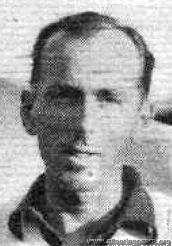 photo: 1937, aged 27
photo: 1937, aged 27Australian record-breaker (solo round-Australia record in 1931), born 1910.
Listed polo, tennis, golf and cricket among his other pastimes.
-
Brook, Harold Leslie
Harold Leslie Brook
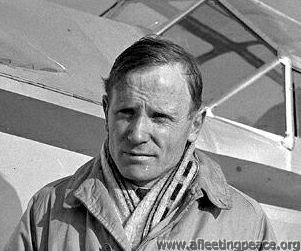
b. 11 October 1897, in Bradford
Only learnt to fly in 1933, and just scraped up the minimum 100hrs solo flying time required to enter the Race. The aircraft was barely ready in time either; a month before the start it didn't have any seats, and was in "a very unfinished condition". Harold was not impressed by "those fools at Reading [i.e. Miles Aircraft]... this is not the first time they have omitted to do something".
In March 1934, he tried to break the England-Australia solo record (held by CWA Scott) but only got as far as the Cevennes before crashing into one of the large mountains they have there. To give him his due, he picked up the important bits of his aeroplane, brought them back and used the engine in this Miles Falcon.
In 1935, after taking part in the MacRobertson, he flew back from Australia in record time; you might like to see him talk about his record-breaking flight (on the other hand, you may have some drying paint that needs watching); if so, click Record Flight From Australia - British Pathé (britishpathe.com)
Two years later, he added the Cape Town record. Mercifully, there don't appear to be any interviews about this one.
Pilot Officer in the Administrative and Special Duties Branch in May 1940, then briefly (28 Oct 1940 - 3 May 1941) in the Air Transport Auxiliary (ATA)
And, despite what you may read or hear, was never an accountant in his life (although with his spectacles on, he did rather look like one, and when he talked, he did rather sound like one [sorry]), and he signed himself 'Brook', not 'Brooke'.
But 'e were definitely from 'Arrogate.
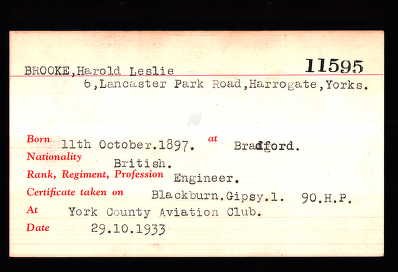
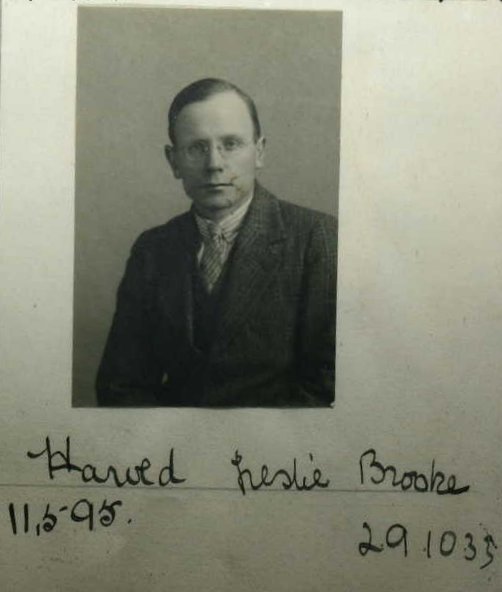
H. L. BROOK writes to TERRY'S
Dear Sirs,
I should like to take this opportunity of congratulating you on the excellence of your Springs in my Gipsy 6 Engine. In a record-breaking flight of this description the engine has to be run for long periods in extreme temperatures, and at a higher rate of revolutions than normal, and for a valve spring to break would spell disaster. I had never at any time any fear of this happening with your springs, and they are now at the end of the flight in just as good condition as they were at the start.
Yours faithfully,
(signed) H. L BROOK.
'Flight'
Racing No. 31—H. L. Brook, and —?
And speaking of Bradford, here is Harold Leslie Brook, who was born there in 1897, and now resides in Harrogate. He joined the Royal Field Artillery on August 20, 1914, at the age of 16, obtained his commission soon afterwards, and, despite a couple of wounds, served five years in France and India.
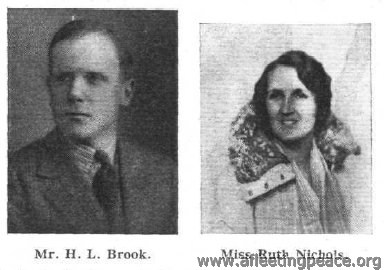
Restored to his family, he remained a normal civilian until Yorkshire began to build and fly sailplanes and gliders. These occupations kept him mildly diverted until the approach of his 37th birthday. Then he began to yearn for horse-power. The York County Aviation Club at Sherburn-in-Elmet offered a likely fulfilment of this secret ambition. So, in August, 1933, Brook placed himself in the hands of Instructor Cudemore, and after four hours' instruction became a soloist with serious designs on the MacRobertson Handicap, for which Phillips and Powis have built him the first of their Miles 'Falcons'.
What happened between last autumn and this spring is now almost historic. Brook bought the "Puss Moth" (Heart's Content) in which the Mollisons had crossed the Atlantic, and, with a total of 43 hr. in his logbook, pushed off solo from Lympne to survey the route to Melbourne. That was on March 28, 1934, at 5.20 a.m.
By noon the incident had closed. Describing it a few days later Brook said that, while flying through very dirty weather over France, he was forced down from 12,000 ft. by ice formation on the wings, and, before he knew how or why, the side of an unsuspected mountain was rushing up at him out of the murk. Guided by some uncanny sixth sense, he brought off a bloodless landing on the mountain proper. The scene of this epic of the air was Genolhac, in the Cevennes. With some local help he salvaged the "Gipsy Major," brought it back to England, and has had it installed in Heart's Content II.
Brook's next attempt on the Australian record will not be solo. If expectations are realised, he will be accompanied by two lady passengers.
'Flight'
Another England-Australia attempt
MR. H. L. BROOKE, a member of the York County Aviation Club, left Lympne at dawn on the morning of Wednesday, March 28, on an attempt to break the record for the England-Australia trip held by Sir Charles Kingsford-Smith with the time of 7 days 3 hours. Mr.Brooke was flying the " Puss Moth " (" Gipsy III ") Heart's Content, in which Mr. J. A. Mollison made an Atlantic crossing. A few hours after leaving Lympne, while flying through fog, he crashed in deep snow near Genholac, in the Cevennes. The machine was completely wrecked, but Mr. Brooke escaped with nothing worse than some bad bruises. For five hours he wandered about inthe mountains, and eventually found a small village, where he was given every attention. Later he returned to the wreck of his machine, and removed the instruments and other articles of value.
'Flight'
April 4, 1935
YORK COUNTY AVIATION CLUB, SHADWELL, LEEDS
During March the York County Aviation Club, Ltd., flew 63 hours at Sherburn-in-Elmet, and Miss Maurice and Mr.Pilkington made first solos. Two machines flew to Nottingham for the club dance, and Mr. Humble, the honorary instructor, has presented the club with a fire tender—a very apposite gift! The next dance will be held on April 13.
Mr. H. L Brook, who has just broken the Australia-England record with a Miles " Falcon," was trained at Sherburn—which appears to be a pretty good advertisement for the instruction.
'Flight'
These days, the home of Sherburn Aero Club: http://www.sherburn-aero-club.org.uk/
SWIFTLY from AUSTRALIA
How H. L. Brook, in a " Gipsy "-engined Miles "Falcon" broke the Solo Record : His Story in an Interview with " Flight
"LAST Sunday afternoon, at 3.55 p.m., the original Miles" Falcon " landed at Lympne, having flown in 7 days•* 19 hr. 50 min. from Darwin, North Australia, withMr. H. L. Brook, of Harrogate, at the controls. The •pilot thus beat the unofficial " s o l o " record of Mr. C. J.Melrose by 13 hr. 10 min., and the officially recognisedperformance of Mr. J. A. Mollison by 1 day 2 hr. 25 min.The shortest time for the Australia-England trip is still,of course, the 6 days 16 hr. 10 min. of Cathcart Jones andWaller in a " C o m e t ."After leaving Darwin at 5.30 a.m. on Sunday, March 24(Australian time), Mr. Brook's time-table was as follows:—Sunday night, arrived Rambang ; Monday, Penang; Tuesday,Rangoon; Wednesday, Calcutta; Thursday, Karachi; Friday,Athens; Saturday, Rome; Sunday, Marseilles (9.25 a.m.) ;Lympne (3.55 p.m.).the Timor crossing, he told a member of the staff of Flight,was " r o t t e n , " with rain, low clouds and heavy head winds.On the trip from Penang he landed on the delta near Calcutta.Over the Sundarbans low clouds and darkness caused him totake this measure rather than to fly on, possibly missingCalcutta, and, as he put it, perhaps making a crash landingthrough shortage of petrol.Perhaps the worst section of the trip was that betweenAthens and Rome, particularly the portion over the channelof Corfu, where a gale was encountered. At Brindisi Mr.Brook was advised not to proceed, but he pushed on andcrossed the Apennines in a snowstorm.And what of the man himself? He is a thirty-eight-yearoldYorkshireman, who, despite the newspaper stories, hasnever been an accountant in his life. When he was youngerhe indulged in motor racing and later built a few sailplanesand gliders. Then he joined the York County Aviation Cluband went solo after four hours' instruction. He next boughtMr. J. A. Mollison's "Puss Moth" Heart's Content, and setout for Australia to survey the route to Melbourne, for he haddecided to enter the MacRobertson Handicap. But ice formationforced the " Puss Moth " down on a mountain side inthe Cevennes. Neither Brook nor the "Major" (which, itshould be remembered, had already been flown over the SouthAtlantic) was rendered hors de combat, however. The enginewas salvaged and Brook brought it back to England, where itwas installed in the first of the Miles " Falcons" which thenwas fitted with extra tanks for the race. During the event itcarried a lady passenger and a large helping of appalling
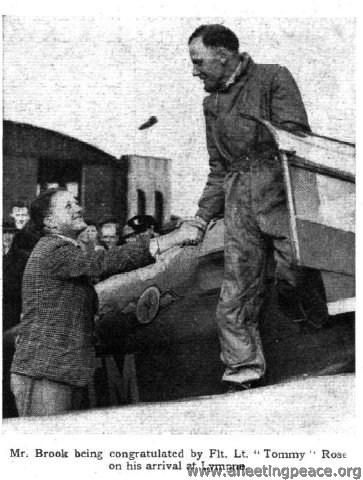
luck (no connection is suggested between the two facts!).Suffice it to say that the Australian trip, a large portion ofwhich was made in easy stages, took about twenty-six daysDuring his stay "down under," Brook worked until the" F a l c o n " and its engine were in tip-top condition beforestarting his almost unheralded flight.Of travelling in the "Falcon " he says that, compared withflying in an ordinary aeroplane with open cockpits, it was" like travelling in a saloon car instead of on a motor cycle. The veteran "Gipsy Major" was run throughout the flight at 2,100 r.p.m.
HILLSON PRAGA
Imported specimen 107 Praga E.114 OK-PGC. Regd G-ADXL (CofR 6479) 27.11.35 to F Hills & Son Ltd; dd Speke to Barton 30.12.35. CofV 91 issued wef 27.2.36. Dd 20.4.36 to Harold Leslie Brook; flown by him to South Africa, departing England 6.5.36; arriving Cape Town 22.5.36. Regn cld 6.36 as sold. Regd ZS-AHL 6.36 to OG Davies, Cape Town. Sold 8.37 to H Cooper, Cape Town. Converted to glider at Youngsfield 9.53.
30th Aug. 1940.
ADMINISTRATIVE AND SPECIAL DUTIES BRANCH.
The undermentioned are granted commissions for the duration of hostilities as Pilot Officers on probation:— 22nd May 1940.Harold Leslie BROOKE, D.C.M. (84353).
-
Broome, Frank Crossley Griffiths
Capt Frank Crossley Griffiths Broome 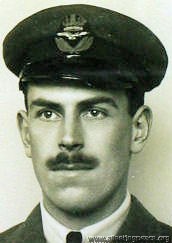 photo: 1917, when a Lieutenant in the Army Service Corps, aged 25
photo: 1917, when a Lieutenant in the Army Service Corps, aged 25Vickers test pilot - he and Stanley Cockerell (q.v.) were known as the 'Heavenly Twins'; Frank served under Stanley in WWI; when Frank married Miss Ismay Lermitte in Colchester in 1920, Capt. S. Cockerell, A.F.C., was best man. He and CJQ Brand were in the same squadron in WWI.
In 1920 the Heavenly Twins were the pilots of the attempt, organised by The Times, to make the first flight from Cairo to the Cape. The Vimy Commercial aeroplane left Brooklands on January 24 but crashed at Tabora [Tanganyika] on February 27. They finally reached the Cape "after a series of undeserved misfortunes".
Frank Crossley Griffiths Broome - born in London (St Pancras) in 1892. He enlisted in the Army Service Corps. Won DFC, and AFC.Youngest son of Frank Broome, and lived at Winterbourne, Weybridge.He married Ismay Lermitte, daughter of Lt Col Lermitte (deceased) of Woodhouse, Great Horkesley at All Saints Church on August 17th 1920.At the wedding ceremony, the cake was adorned with the silver Vickers Vimy, which had been presented to him by The Times newspaper, to commemorate his 1920 Africa flight (in Silver Queen II) The purpose was to test the feasibility of the Cape to Cairo route, and was sponsored by the newspaper. The plane crashed, and it sounds as though the expedition was an arduous one.
Later the same crew of Captain Cockerell, Captain Broome and ex Sgt Major James Wyatt crashed in a seaplane in March 15th 1922, about four miles from Hastings.
Broome also flew with 112 Sqn, based at Throwley. On the night of 19/20 May 1918, he was one of dozens of pilots that took off against a wave of Gothas and Giants which attacked the UK. Broome didn't see them, but fellow sqn pilot CJQ Brand bagged a Gotha that night. -
Brown, Harry Albert
Capt Harry Albert 'Sam' Brown
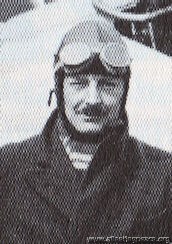
The 'amiable' ex-instructor for the Lancashire Aero Club; joined Avro after WWI and became their chief test pilot from 1928.
From 1921-26 he was Avro's man in the Spanish Naval Air Service.
Badly injured in 1929 when the first Avocet crashed at Woodford.
-
Brown, Winifred Sawley
Miss Winifred Sawley Brown
Royal Aero Club Certificate No. 8091 (6 Apr 1927)
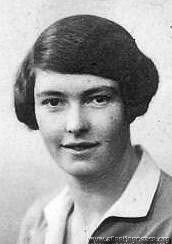 photo: 1927, aged 28
photo: 1927, aged 28 .jpg)
b. 26 November 1899 in Brooklands, Cheshire; her father was director of a firm of butchers.
She said she learnt to roll her own cigarettes at the age of five; expelled from school at age fourteen (for writing 'the headmistress can go to hell' on the toilet wall), she made her first flight in 1919 from Blackpool sands.
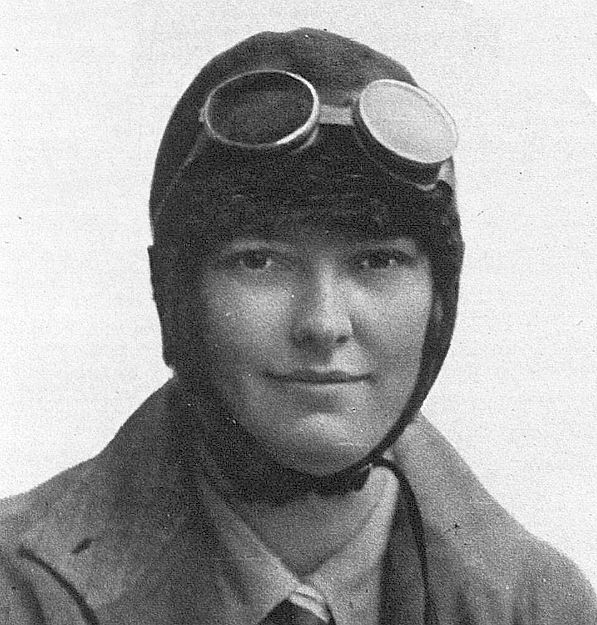 "A Well-known English Pilot" - The Sketch, 1929
"A Well-known English Pilot" - The Sketch, 1929First woman to win the King’s Cup (in 1930); well known in Lancashire as a hockey player who kept goal for the county and toured Australia with an English team; also a pretty good golfer, sailor and tennis player.
To see her being thoroughly embarrassed by her reception back at the Lancs Aero Club after winning the King's Cup, and to hear her say “Thank you for this welcome, it’s awfully good of you and I’m awfully happy to be back again in Lancashire, at the aerodrome where Captain Brown taught me to fly…. I’m delighted to have won the race and, well, thank you all very very much, I can’t say any more”, see here
.jpg)
Her son, Tony, b. 11 December 1940 in Angelsey, is "loved and remembered by millions as slippery Adam Chance in Crossroads".
She owned:
the 1928 Avro 594 Avian III, G-EBVZ - which her father bought for £500 - in which she won the King's Cup in 1930, then
a 1930 Avro 616 Sports Avian, G-ABED.
'Win' died in July 1984 in Hove, Sussex.
And you can now get a proper biography, entitled "WINIFRED BROWN: Britain's Adventure Girl No. 1", written by King's Lynn's most famous living author, Geoff Meggitt.
See www.pitchpole.co.uk for details!
b 26 November 1899 in Brooklands, Cheshire; her father was director of a firm of butchers.
Learnt to fly in 1926, but in 1928 was the pilot in a horrific accident when she was duped into a publicity stunt by Walter Browning, the 'Dancing Airman', who told her a film had to be delivered urgently, and persuaded to land her Avian in a field. She was surprised to see a crowd of people, realised she wasn't going to stop in time and tried to take off again, but hit the crowd standing near a wall; a 10-year old boy was killed, several persons injured, and "many women fainted". It turned out that the 'urgent film' never existed, just an empty box. She was exonerated of any blame.
First woman to win the King’s Cup, in 1930. She became an instant star across the world, especially in her home city of Salford. Invited to the 1930 Historical Pageant at Buile Hill Park shortly after the race, crowds chanted for a speech to be made. Winifred said “This is really wonderful of you all, I am very glad to belong to Salford” which prompted one audience member to start a sing along of ‘for she’s a jolly good flyer’. The Mayor of Salford congratulated Winifred on behalf of the people, and joked “No man begrudges you your honour and you have put us all back in our place”.
Before the Race, she was "well known in Lancashire as a hockey player who keeps goal for the county and has toured Australia with an English team".
One of the guests of honour at the Ladies Night dinner of the Press Club in December 1930; the chairman reckoned that "Women had forced their way into the columns of the Press, and now they seemed to be on the way to monopolizing them".
She was still an active ice hockey player in 1933, flying herself from Manchester to London to take part in the Sheridan Cup, where she kept goal for the "Queen's Ladies". She was also a pretty good golfer; she and her partner Mrs Brooks got to the last 8 of the Ladies' Northern Foursomes at Leeds in 1938.
Later sailed from North Wales to Spitsbergen in her 45-foot yawl Perula. During WWII, Chief Coxswain in the Marine Department of Saunders Roe.
In 1940 she gave birth to a son, Anthony, after it was revealed she had "secretly married her long time adventure companion Ron Adams" (although I'm not sure what was so secret about it).
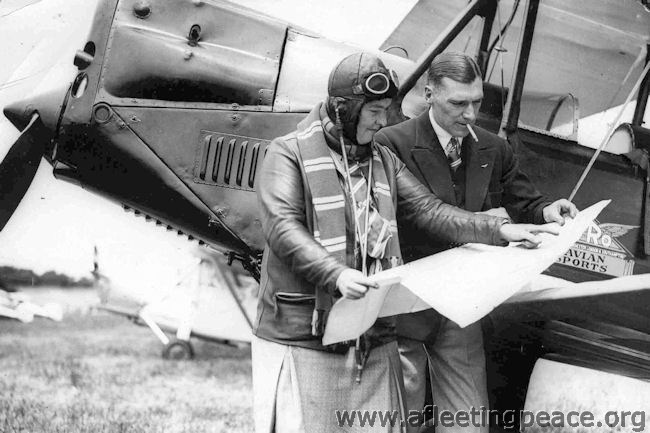
She attended the 1950 King's Cup Race, but was "horrified ... I thought sadly of Bert Hinkler, Cobham, Barnard, Hubert Broad and Wally Hope."
'Win' died in July 1984 in Hove, Sussex.
Winifred Brown was born [26 November] 1899 in Brooklands, Cheshire. She moved to Salford at an early age and went on to attend ‘Bella Vista’, Broughton High School for Girls. Winifred’s father, Mr Sawley Brown, was director of Messrs. James S. Brown & Sons, a firm of butchers.
Winifred was a natural sportswoman, and achieved great success in flying when she became the first woman to join the Lancashire Aero Club in 1926 and the first woman in the region to qualify for a pilot’s licence in April 1927. By March 1928 Winifred was recruited to the rank of a private owner member, and that same year she won the club’s Rodman Trophy.
By the 1930 King’s Cup Air Race, a 750mile race around England, Winifred Brown was an experienced pilot, although she had never flown such a long distance. In the pre-race articles that appeared in Flight magazine, on June 13 1930,Winifred’s entry was not taken seriously, mentioned with six other pilots of the ‘fairer sex’ only briefly. Winifred flew an Avro Avian with a Cirrus III engine with her co-pilot, and later husband, John Ron Adams. The Air Race was full of excitement, after starting the race at Hanworth, London. By the time she reached Barton Aerodrome, Winifred was in third position and the large crowds roared with excitement. The final finish was at Newcastle, by which time she’d run away with the lead. There was a dramatic finish when Winifred spotted a large aircraft behind them. Believing it to be a competitor and determined not to be beaten to the finish line, the Avian was pushed to speeds of 160 miles per hour! Afterwards a mechanic told the Salford Reporter that this speed ‘was courting disaster’. By pushing her Avian to the limits Winifred beat her male contemporaries, including Flight Lieutenant Waghorn, winner of the prestigious Schneider Cup.
As the first woman to win the King’s Cup, Winifred became an instant star across the world, especially in her home city of Salford. Invited to the 1930 Historical Pageant at Buile Hill Park shortly after the race, crowds chanted for a speech to be made. Winifred said “This is really wonderful of you all, I am very glad to belong to Salford” which prompted one audience member to start a sing along of ‘for she’s a jolly good flyer’. The Mayor of Salford, Samuel Finburgh, congratulated Winifred on behalf of the people, and joked “No man begrudges you your honour and you have put us all back in our place”(Salford Reporter 11 July 1930).
Winifred’s later adventures in the 1930s went beyond Britain, this time sailing rather than flying from North Wales to Spitsbergen in her 45-foot yawl Perula. During the Second World War, Winifred worked as Chief Coxswain in the Marine Department of Saunders Roe, the flying boat constructors in Beaumaris. Winifred worked with a fleet of R.A.F. craft with all-male crews, she met Catalinas from Bermuda, landed and embarked crews and towed aircraft.
In 1940 she gave birth to a son, Anthony Sawley Adams, after it was revealed she had secretly married her long time adventure companion Ron Adams.
With thanks to John B. Coxon and Tony Adams
In 1950, Winnie wrote this lovely article for 'Flight':
POST-WAR AIR RACING - is Something Missing?
A Pre-war Winner Asks Some Pertinent Questions
By WINIFRED BROWN
As something "rather different" in post-war air races, the Daily Express "International South Coast Race" on September 16th seems likely to be watched with interest, especially by "the forgotten pioneers of long ago" - in which category a South African magazine recently included me!
For some time we have been asking ourselves " What has gone wrong - air racing or we old pilots?" Has the sport really lost its thrill and popularity, or have we merely become the club bores who stand at a bar counter and say, between beers, "Things aren't what they were"?
I have been thinking about these questions for several weeks - ever since, in fact, I set off, in excited anticipation and an Austin Seven - to see this year's King's Cup Race. The Wolverhampton Aero Club had very kindly invited me - "Just to show them you are still in the land of the living, Win?" chuckled John Bill over the telephone, for the previous year the B.B.C. had coupled my name with the type of wings that go with a harp! It was 20 years since I had won the King's Cup and 19 years since I have even seen an air race. I had a shock coming to me!
When asked if I were flying, I laughed and replied ungrammatically, "What, me! I'm used to 105 m.p.h.,not 501." And as my little car proceeded at a sedate 40m.p.h. my mind went back 20 years. Who would be there? Tommy Rose, Jimmy Jeffs, Robin Cazalet, "Lamps"? What fun it would be to see them all again!
On arrival at the Star and Garter I rushed to look at the hotel register... I didn't recognize a single name! They must still be in the bar... we had always lingered... they would come later; so, casting respectability to the wind, I ignored my married name and wrote " Win Brown and son."
That night there was a R.A.F.A. dance - to meet the "famous pilots"! The dancing was popular enough, but we were not; when we went on the stage the room practically emptied - the dancers had probably done far more flying than we had!
Still there was a nice bar upstairs, and I talked with interest to the 1950 pilots. "Do you have flying pageants these days?" I asked a young man. For a moment he looked puzzled, then replied "Yes, but we call them 'air rallies'". When I flew in 1930 we had a 750-mile course. Do you like these short circuits? " "Oh yes! It's a better test of flying—none of this navigation stuff enters into it. '
I thought sadly of Bert Hinkler, Cobham, Barnard, Hubert Broad and Wally Hope. That night I went to bed at 11.30 - if there was a party I didn't find it!
Next day I got to the airfield early. I looked and blinked. Was I back in 1930? Where were these modern super aircraft? I felt I could have got into almost any one of the competing machines, and flown as I used to do; but my son, aged nine, was thrilled as I took him round. It was then the Press descended on us - "That's right,sonny - smile up at your grannie!'' My expression was such that the pictures did not appear, but fortunately the bar tent opened and Jack Cantrill, who had given me my first flying lesson in 1925, assisted me to recover.
Then a few old faces appeared, but we all sadly agreed that "things ain't wot they was." As for the race itself - well, it sounded fine on the radio but, with no rudeness intended, I would not describe Hawk Trainers and Austers "screaming" round anything. Princess Margaret's Hurricane gave us a thrill and it was beautifully handled by Townsend, but the two Spits that I hadrelied on to impress my son promptly took off and got lost - so perhaps there is something in this ''navigation stuff" after all! One we never saw again, but the other obligingly returned, much to the delight of my small son, and the spectators - but probably less so to the owner of the aircraft whose tail it knocked clean off.
But what horrifies me about this race - and, for that matter, present-day air racing in general - is that the slide-rule experts, secreted with Charles Gardiner in glass towers, seem reasonably able to forecast the result after one lap! In the King's Cup they were about 60 yards out, and in the two Newcastle races a few weeks later it seems from Flight's report that the ultimate winners appeared unbeatable almost from the outset.
Where is the sport, the fight, the fun of the thing? It seems to me that if you haven't beaten the handicappers before you start you might just as well stay in the bar. On a long circuit a race was never lost until it was won. Engines could pack up in sight of home; flimsy racing wheels could buckle on a careless landing; you might run into cloud or fog and fail to find that white cross in the field; but no matter what happened there was always home - the others might be faring worse. To beat the handicappers was a decided help, but only the beginning of a long story.
After this year's King's Cup I scanned the newspapers, but gone were the old headlines. The little publicity there was went to the tragic accident rather than to Edward Day. I wondered vaguely if a victory for Princess Margaret would have received more publicity, but I doubt it - my papers were full of the footballers who received a free trip to South America, £25 each and the offer of some £175 a month, and returned highly incensed because a hair-cut cost 7s and the people carried rifles!
So good for British prestige, and obviously so much more important than a few men and women who risk their neck for British aviation, a possible prize of £150 and a replica of the Cup. I did risk my neck for about £1,000 in 1930, and in those days the cup was won outright.
What has caused this lack of interest on the part of the Press and public? Has flying become too common? But, for that matter, what could be more common than football and race-horses, sports which still hold the crowds? Perhaps it is the effect of the war - petrol only just off the ration, money short, private owners and aero clubs unable to afford the high-powered aircraft we now scarcely glance at as they do, literally, scream through the sky.
Presumably with the industry in a transition stage pending large-scale production of military jet aircraft, and because of present-day-economic conditions, the trade cannot give the support it did to racing. For this reason one must admire the present-day private owner. Gone are the days of dual at £1 an hour, free petrol, a loaned engine, and perhaps even a free aircraft. To-day one can hardly afford to patronize the bar tent!
My small son was all for presenting the King's Cup to Cole and his Comper Swift. ''That little one has done best, Win - t has gone all that way against the big ones." Out of the mouths of babes and sucklings.... Would the old Circuit of Britain again arouse public interest? Personally, I think it would. Some 15,000 people were present at Wolverhampton this year, but in 1930 similar, if not larger, crowds assembled at each of the controls at London, Bristol, Manchester, Newcastle and Hull, not to mention the turning-points at Southampton, Birmingham,Liverpool, Leeds and Leicester. The King's Cup race belonged to the country as a whole and not just to one area.
But there is another point, and an important one. The rot started to set in way back in 1931, when new King's Cup regulations caused the entries to drop from 101 to 41. Restrictions! They are ruining our country to-day. It seems to be that the South Coast Race is, in some degree, a return to old conditions, and that if it is successful it may influence next year's King's Cup. I hope so, for personally I would like to see a grand and glorious free for all - Maggies to Meteors on the old circuit of Britain.
''What else would you do, Win?" asked one of the old timers as we stood discussing the matter in the bar. "I'd have bookies under nice, coloured umbrellas - but I'd keep them away from the slide-rule experts!" And I suppose you'd have better prizes and bigger bar tents? "Sure!" I laughed. "Well," said an old pilot, slowly, "something has got to be done; the King's Cup to-day is no different to the little races we used to take part in every Saturday at the old pageants." "Rallies, dear, rallies," I corrected.
So we all had another beer, and my small son, waiting outside, began to take a dim view of aviation.
-
Bruce, T B
Flt-Lt T B Bruce
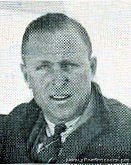
photo: 1930
-
Brunton, Maurice
Mr Maurice Brunton
b. 6 Sep 1906, Preston, Lanc
RAF 1925-38;
Pilot for Imperial Airways, 1939
d , 21 Nov 1971 - London
Research: thanks to Steve Brew
-
Bryans, John Reginald
Mr John Reginald Bryans
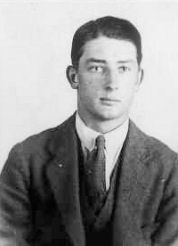
b. 16 Jun 1906 in Kent, a Naval Officer
Royal Navy Sub-Lt in 1928, Lt in 1929, and a (not very successful) amateur tennis player.
Left the Navy and married Dame Anne Margaret Gilmour, daughter of Sir John Gilmour, in 1932.
A Director of British Continental Airways in 1936; they operated a service between Liverpool, Doncaster and Amsterdam, and from London to Stockholm.
Resigned from the board of British Airways, rejoined the Navy and was promoted to Lt-Cmdr(Emergency) in October 1937.
Later, Chairman and MD of Bryans of Mitcham, Surrey; in 1962 he wrote to The Times: "As an exporter, I humbly submit it is high time everyone stopped talking about a fair basis for British industry to export, and got down to some action".
From 1964, a Director of Seltronic Group.
d. Jul 1990 in London
-
Buckley, James Brian
Mr James Brian Buckley DSC b. 1905.
Royal Navy Service Pilot, attached to HMS Courageous in 1930.
Killed in WWII: 21st March 1943, when Lieut-Commander, RN on HMS Glorious; buried at Lee-on-Solent.
-
Bulman, Paul Ward Spencer
Maj (later Flt-Lt) Paul Ward Spencer 'George' Bulman CBE MC AFC
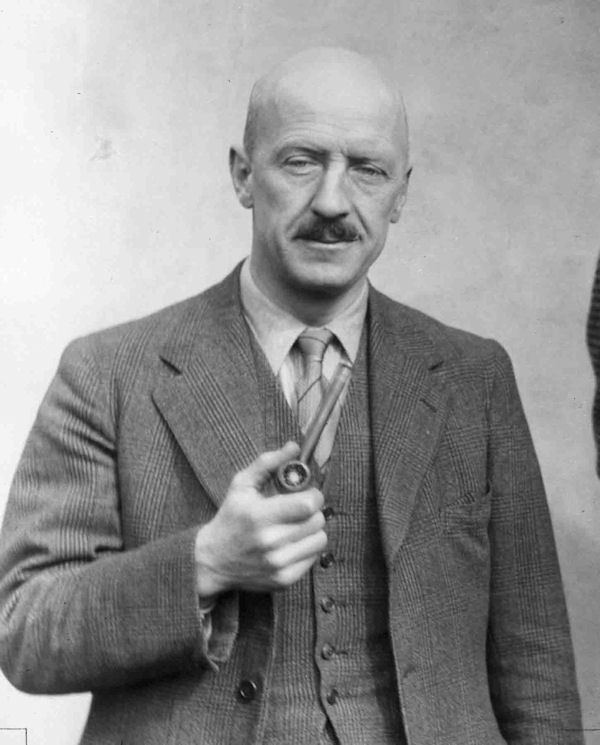
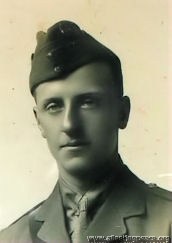 photo: 1917, when a 2nd Lieutenant in the RFC
photo: 1917, when a 2nd Lieutenant in the RFCUniversally known as 'George'; after WWI, test pilot at RAE Farnborough until 1925, then chief test pilot at Hawker Aircraft, where he took over from 'Fred' Raynham.
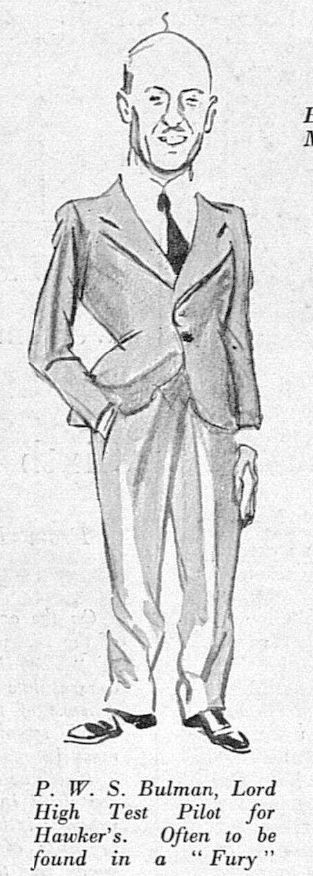 The Bystander Special Aviation Edition, 1933
The Bystander Special Aviation Edition, 1933It was at his instigation that the Hurricane was fitted with a variable-pitch propeller, "The improvement in performance was so impressive that the result was a panic of refitting of airscrews, and the effect on the outcome of the Battle of Britain can be imagined."
Harald Penrose said he was "a great little man, eager yet cool, eyes crinkled in a smile, bald head gleaming as he climbed helmetless into the cockpit".
d.1963
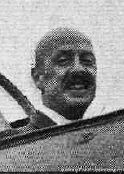 seated in a prototype Hurricane c.1946
seated in a prototype Hurricane c.1946Britain's Test Pilots
Flight, 4th April 1946: “GEORGE” BULMAN might never have been known in the aircraft industry had he continued at his original occupation. In fact, he would have been more nationalized than he is now, because he started his business career in the Bank of England. Perhaps that is where he got his meticulous attention to detail.
Group Capt. Bulman is seldom known by his proper Christian name Paul, and it is interesting to learn how he ever came to be known universally as "George." He always confessed to a shocking memory for names, and during the 1914-18 war addressed almost everyone as "Colonel" or "General." When peace came, a civil edition had to be found, and his friends and acquaintances became Georges. They, in their turn, called him "George" Bulman.
A little more than a year before the Royal Flying Corps became the Royal Air Force in April, 1918, Bulman learnt to fly on a "Rumpety" (Maurice Farman Longhorn) of No. 4 Reserve Squadron at Northolt. Previous to this he had been in the Honourable Artillery Company, but was dead keen to become a motor cyclist despatch rider. A motor-cycling friend, however, managed to persuade him that flying was the thing really worth doing, and got him transferred to the R.F.C.
After his training, "George” was with fighters exclusively. First in No. 46 Squadron under Major (now Air Marshal, retired) Philip Babington, flying Sopwith Pups and then with No. 3 Squadron, when it changed over to Sopwith Camels. He went to No. 3 as a fighter expert, and in the fighting at Courtrai these tiny Camels—carrying four 20lb bombs each—operated with the tanks. This was the birth of the operations by Typhoons, the direct descendants of the Camel, in the Falaise Gap in the Battle of Normandy nearly 30 years later. It is impossible to get Bulman to talk about his deeds in the 1914-18 war. He was heard to let it slip on one unguarded occasion that he was a bloodthirsty young man, but farther than that he never goes. Asking how many enemy aircraft he got to his credit always brings the same answer: ''We flew as a Flight, and did no individual operations. All victories belonged to the Flight.” Nevertheless, he was awarded the Military Cross for his share.
First Test Work
At the close of hostilities in1918 he was granted a permanent commission, and almost immediately took up his first test flying. He was posted to the Daimler airfield at Radford, where Sopwith Snipes and S.E.5AS were produced, and shortly afterwards went to the ferry pool in the Midlands at Castle Bromwich. Here experience on twin-engined types was gained as the unit had to test and ferry D.H.10s (made by the Birmingham Carriage Co.) and Handley Page 0/400s.
It was because of his work here that he came to take up test flying as a permanent occupation. There happened to be a number of one-engined failures on the D.H.10s which had caused some loss of life among the ferry pilots. "Farnborough“ was investigating the trouble, and "George" took one to Farnborough to replace a crash. He had found the trouble in the petrol system, and the outcome of a talk on this with Roderic Hill (now Air Marshal Sir Roderic) resulted in an invitation to join Farnborough. That was in 1919.
His test flying at the R.A.F. dealt exclusively with engines, and the period between 1919 and 1925 proved to be a fascinating one ; as he puts it,'' ironing out the bugs of the air cooled radial engine." The team with whom he worked took the radial out into the world.
While at Farnborough he did a certain amount of testing for Blackburns, and, among other types, flew the Cubaroo, Blackburn, Beagle and Airedale. In view of the development to-day in helicopters, it is interesting to remember that 20 years ago, at Farnborough, he flew the Brennan helicopter, which had all the basic elements of the successful modern types. It was flown while partially moored in the old balloon shed.
About 1924 there came into existence the R.A.E. Aero Club, of which Oliver Simmonds (now Sir Oliver of Aerocessories) was the secretary, Mr Child the designer, and Bulman the chairman and competition pilot. A monoplane—the Hurricane—with triangular-section fuselage, was built by the members and fitted with a horizontally opposed engine, first a 600 c.c. Douglas motorcycle engine and later a 30 h.p. Bristol Cherub. This contraption nearly wrote "George" off. Vibration from the twin-cylinder engine was prone to shut the petrol off because the cock employed was one of the very ordinary "slide with a hole in it" models common to motor bicycles. This cock was under the dash and was critical of its setting. Imagine, then, the juggling required when the engine and airscrew stopped dead at 800ft. over Redhill while flying from Farnborough to Lympne for the competitions. He had to dive nearly vertically to get sufficient airspeed to force the engine over compression—no small task with a two-cylinder engine—and at the same time search under the dashboard for the petrol cock. The engine picked up with no height to spare.
Display Flying
Pilots who could fly as exquisitely as Bulman were very much in demand for the Royal Air Displays, which were then held on the last Saturday in June each year. Since he was already doing odd jobs for Hawkers, and was thes ervice pilot deputed to fly the Hawker Woodcock in 1924,it was natural that he and the Hawker people became well acquainted, with the result that in 1925 he resigned his commission and joined the company. The Horsley was being flown at the time, and Bulman took over the Mark I from Fred Raynham who was one of the very old stagers. Raynham was, I think, the only man who ever had a joystick break off in his hand and have to land the machine (a Handley Page monoplane) by the small socket at the base, letting go every second or so to look over the side to see where he was going. "George" did all the test flying on the Horsley II, including preparing it for thel ong-distance record, which it held for a few hours in 1927 by flying from Cranwell to Jask in the Persian Gulf. It was beaten the next day by Lindbergh flying from NewYork to Paris. If any pilot to-day thinks he is flying an overloaded aircraft let him remember that when the Horsley was filled with fuel ready for the record, it burst its tyres just standing on the tarmac!
Starting with the Heron and Hornbill, Bulman was responsible for test-flying all the Hawker prototypes right up to and including the Hurricane. The Fury (biplane) and Hart days were the days he loved. He worked like a Trojan turning good designs into super-good flying aircraft. This good test-flying, allied to his technical knowledge and charm of manner, undoubtedly played a big part in bringing the Hawker concern to the pre-eminence which it now enjoys.
Having got Philip Lucas to take on development flying of types later than the Hurricane, Bulman went to the U.S. in May, 1941, as Chief of the Test Branch of the British Air Commission. He had a team of 10 or 11 pilots with him, and they flew all the types of aircraft on order for the British Government, making out flight-test reports on the Boscombe Down pattern. At first this was a civilian job, but after America came into the war he wore uniform and was promoted to Group Captain.
Compressibility Recognised
It was whilst he was in America that Bulman realised that the peculiar happenings which test pilots were reporting were just what the scientists had foretold would happen when speeds in the region of that of sound were approached. Much experimental work was carried out on the Lockheed Lightning, and Bulman devised a method of flying whereby the effects could be intensified or diminished safely and at will. His notes to test pilots on the subject show a clear-cut appreciation of the problem, and he probably has more practical knowledge on the subject than anyone else.
According to Bulman, his test pilot's life was almost devoid of incident—certainly he was always careful to study everything on the ground before taking off—but he has had one or two close shaves. For instance, when he was flying the Leopard-engined Horsley to Denmark, he had a con-rod break over Heligoland. Landing in Germany was forbidden. So, finding that the engine would run at full throttle (imagine the vibration and racket) he flew to Groningen in Holland and landed there. The inside of that engine was a marvel to behold!
And here is a story told for the first time. I have had it filed away in a drawer for years. At a Household Brigade Club meeting at Hatfield "George" put up a remarkable show. To the spectators it appeared as if he climbed vertically to 3,500ft, stopped his airscrew and then, flicking into a vertical dive, regained his engine as he pulled out at no feet. What really happened was that he accidentally gave the Hart a little negative g at the top of the climb and this emptied the Kestrel's carburettor. From the wealth of his experience he remembered that an airscrew will start in a pull-out at 3 or 4g even when it refuses to do so in a straight dive.
After twenty years' service with the Hawker Company, he gave up the directorship which he had held since 1936, and is now taking a well-earned rest before coming back into the industry. But before leaving '' George '' to sit back for a while, let me quote one more case of how an enthusiastic man can get done a job which has far-reaching results. In 1938 all the Hurricanes had fixed-pitch airscrews, and no official sanction could be got for anything else. Bulman scrounged a Hurricane off contract and got de Havillands to collaborate by putting in a two-speed airscrew. He then borrowed a c.s. governor from the Hamilton Standard Corporation in America. The improvement in performance was so impressive that the result was a panic of refitting of airscrews, and the effect on the outcome of the Battle of Britain can be imagined.
-
Butler, Alan Samuel
Mr Alan Samuel Butler J.P. 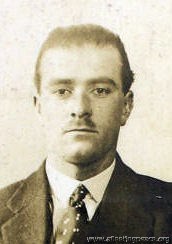
photo: 1921, aged 23
Chairman of de Havilland; the story goes that in 1921 he asked the one-year old de Havilland Aircraft Company to build a fast two-passenger touring aeroplane to his specification,
and stumped up £3,000 for them to do it. The money saved the company from extinction and they appointed him to the board of directors forthwith. He held the position until he retired in 1950.
The aeroplane became the DH37, (which he named, firstly, 'Sylvia' after his sister, then, rather diplomatically, 'Lois', after his wife, q.v.), which he entered in the very first King's Cup Race in 1922 and again in 1924, coming third.
He and Lois set up a world speed record of 120mph for 1000 km in 1928, and they also flew to Cape Town together .
Entered the MacRobertson Race in 1934 (assigned No 59) but didn't take part.
Was still aviating in 1970.
-
Butler, Francis Charles Joseph
Mr Francis Charles Joseph Butler 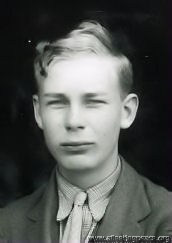
photo: 1935, aged 20
From Faringdon, Berks. Also a keen yachtsman.
Killed in WWII: 19th June 1940 when a Pilot Officer, RAFVR with 9 Sqn, commemorated at the Runnymede Memorial (i.e. no known grave)
-
Butler, Lois
Mrs Lois Butler
Royal Aero Club Certificate 8634 (14 Jun 1929)
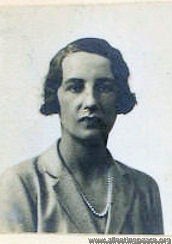
Née Reid
b. 3 Nov 1897 in Montreal, Canada; the "beautiful" [so said Harald Penrose] wife of Alan Butler.
(later, the 'Flying Grandmother', oh well...)
Her first husband having died in 1923, she married Alan Butler in 1925; together they had a daughter and a son.
15th in the Women’s Combined Alpine Skiing at the 1936 Winter Olympics, skating for her native Canada (although she was a member of the British Team before that).
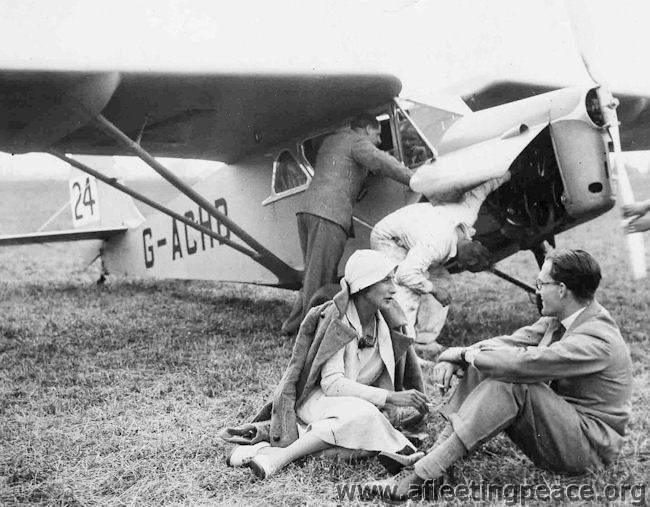 King's Cup 1933
King's Cup 1933Post-WWII, the Butlers moved to Rhodesia and bought a tobacco farm, but eventually moved back to Studham Hall, Bedfordshire.
She owned a 1930 DH.80A Puss Moth G-ABGX, which was sold in France in December 1934, re-registered as F-AMRX and whose registration was finally cancelled in 1936.
d. 17 Aug 1970 in Piraeus, Attiki, Greece from a heart attack while on holiday, and is buried in Studham.
-
Campbell Black, Tom
-
Campbell, Thomas Wight
Mr Thomas Wight Campbell
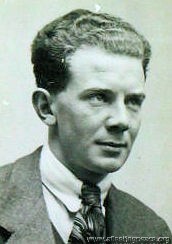 photo: 1921, aged 21
photo: 1921, aged 21'Jock', worked at RAE Farnborough; test pilot at Bristol with Frank Uwins in 1928; later a Wing Commander
Page 3 of 23

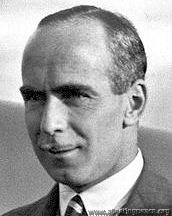 photo: 1934
photo: 1934
